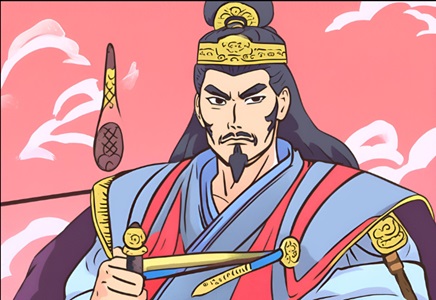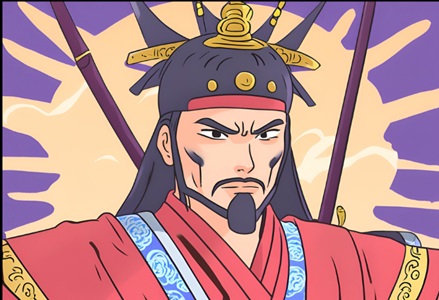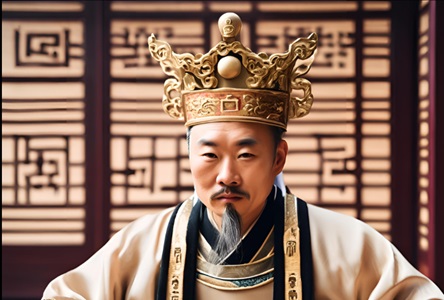Title of Biography in Chinese, Pinyin: 忽必烈传 (Hūbìliè Zhuàn).

Title of Biography in English: The Biography of Kublai Khan.
Check out books on my Amazon and Barnes & Noble homepages as well as the following pages to learn Biographies of famous Chinese personalities-
- Part 1 – Chinese Biography Book Series for Beginners
- Part 2 – Chinese Biography Book Series for Beginners
- Part 3 – Chinese Biography Book Series for Beginners

The Biography of Kublai Khan in English (英文传记)
Kublai Khan: The Outstanding Ruler of the Yuan Dynasty

Kublai Khan, also known as Bolozhujin Kublai, was the fifth emperor of the Yuan Dynasty and one of the important rulers of the Mongol Empire. Born in 1215, he was the grandson of Genghis Khan and the fourth son of Torlei. Kublai Khan was intelligent from a young age and deeply loved by Genghis Khan.
After ascending to the throne, Kublai Khan vigorously promoted the adoption of Han Chinese laws, adopting the political system, bureaucratic structure, and imperial examination system of the Han Chinese, laying a solid foundation for the stability and development of the Yuan Dynasty. He focused on agricultural production, built water conservancy projects, and reduced taxes on the people, enabling the economy of the Yuan Dynasty to develop rapidly. In terms of culture, Kublai Khan advocated Confucianism and promoted the dissemination of Han Chinese culture, promoting ethnic integration.
Kublai Khan also actively expanded his territory. During his reign, the territory of the Yuan Dynasty reached unprecedented vastness. He dispatched generals to campaign in Europe, establishing contact with the West and making significant contributions to cultural exchanges between East and West. At the same time, Kublai Khan also attached great importance to diplomatic relations with neighboring countries, resolving boundary disputes with them through peaceful means.

Kublai Khan’s life is filled with legendary color. He was not only an outstanding ruler of the Yuan Dynasty but also a monarch with foresight and vision. His political wisdom, military talent, and ethnic integration policies have made significant contributions to the prosperity and stability of the Yuan Dynasty.
Learn Biography Of Kublai Khan in Chinese (中文传记)
忽必烈,全名孛儿只斤·忽必烈,是元朝的第五位皇帝,也是蒙古帝国的重要统治者之一。他生于1215年,是成吉思汗的孙子,托雷的第四子。忽必烈从小聪明过人,深受成吉思汗的喜爱。

忽必烈即位后,他大力推行汉法,采用汉族的政治制度、官僚体制和科举制度,为元朝的稳固和发展奠定了坚实的基础。他注重农业生产,兴修水利,减轻百姓的赋税,使得元朝的经济得到了迅速发展。在文化方面,忽必烈倡导儒学,推动汉文化的传播,促进了民族融合。
忽必烈还积极扩张领土,他在位期间,元朝的疆域达到了前所未有的广阔。他派遣将领远征欧洲,建立了与西方的联系,为东西方文化的交流做出了重要贡献。同时,忽必烈也重视与周边国家的外交关系,通过和平手段解决了与周边国家的边界争端。
忽必烈的一生充满了传奇色彩。他不仅是元朝的杰出统治者,也是一位具有远见卓识的君主。他的政治智慧、军事才能和民族融合政策都为元朝的繁荣稳定做出了巨大贡献。
Kublai Khan Biography Keywords- English, Chinese & Pinyin (关键词)

- 忽必烈(Hūbìliè):Kublai Khan: The fifth emperor of the Yuan Dynasty and an important ruler of the Mongol Empire.
- 元朝(Yuáncháo):Yuan Dynasty: A dynasty founded by Kublai Khan and ruled by the Mongols in China.
- 汉法(Hànfǎ):Han Law: The political system, bureaucratic structure, and imperial examination system adopted by Kublai Khan from the Han Chinese.
- 疆域(jiāngyù):Territory: The vast territory expanded by Kublai Khan during his reign.
- 民族融合(mínzú rónghé):Ethnic Integration: Kublai Khan’s policy of promoting cultural exchange and integration between different ethnic groups.
Pinyin of Kublai Khan Biography (忽必烈传记的拼音)

Hū bì liè, quán míng bèi er zhǐ jīn·hū bì liè, shì yuáncháo de dì wǔ wèi huángdì, yěshì ménggǔ dìguó de zhòngyào tǒngzhì zhě zhī yī. Tā shēng yú 1215 nián, shì chéngjísīhán de sūnzi, tuō léi de dì sì zi. Hū bì liè cóng xiǎocōngmíngguò rén, shēn shòu chéngjísīhán de xǐ’ài.
Hū bì liè jíwèi hòu, tā dàlì tuīxíng hàn fǎ, cǎiyòng hànzú de zhèngzhì zhìdù, guānliáo tǐzhì hé kējǔ zhìdù, wèi yuáncháo de wěngù hé fāzhǎn diàndìngle jiānshí de jīchǔ. Tā zhùzhòng nóngyè shēngchǎn, xīngxiū shuǐlì, jiǎnqīng bǎixìng de fùshuì, shǐdé yuáncháo de jīngjì dédàole xùnsù fāzhǎn. Zài wénhuà fāngmiàn, hū bì liè chàngdǎo rúxué, tuīdòng hàn wénhuà de chuánbò, cùjìnle mínzú rónghé.
Hū bì liè hái jījí kuòzhāng lǐngtǔ, tā zài wèi qíjiān, yuáncháo de jiāngyù dádàole qiánsuǒwèiyǒu de guǎngkuò. Tā pàiqiǎn jiànglǐng yuǎnzhēng ōuzhōu, jiànlìle yǔ xīfāng de liánxì, wèi dōngxī fāng wénhuà de jiāoliú zuò chūle zhòngyào gòngxiàn. Tóngshí, hū bì liè yě zhòngshì yǔ zhōubiān guójiā de wàijiāo guānxì, tōngguò hépíng shǒuduàn jiějuéle yǔ zhōubiān guójiā de biānjiè zhēngduān.

Hū bì liè de yīshēng chōngmǎnle chuánqí sècǎi. Tā bùjǐn shì yuáncháo de jiéchū tǒngzhì zhě, yěshì yī wèi jùyǒu yuǎnjiàn zhuó shí de jūnzhǔ. Tā de zhèngzhì zhìhuì, jūnshì cáinéng hé mínzú rónghé zhèngcè dōu wèi yuáncháo de fánróng wěndìng zuò chūle jùdà gòngxiàn.


